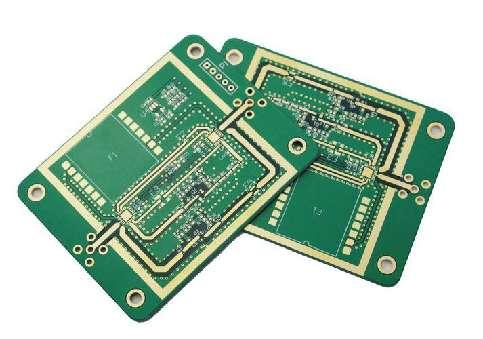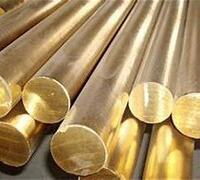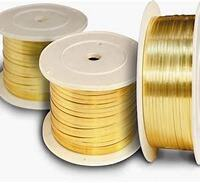1. Introduction
In the past 48 hours, global copper prices surged past $10,000 per metric ton due to supply constraints in Chile and renewed infrastructure investments in the U.S. and EU. This spike has reignited interest in copper-based components—from earthing systems to welding materials—making it the perfect moment to unpack the nuances of copper rod and strip technologies.

Whether you’re an electrician sourcing a copper earth rod, a fabricator choosing between copper brazing rods, or a recycler optimizing the best way to strip copper wire, understanding the subtle differences between these products can save time, money, and performance headaches.
2. Copper Rod Variants: Solid, Bonded, and Clad
Not all copper rods are created equal. The three main categories—solid copper rod, copper bonded earthing rod, and copper clad steel ground rod—serve distinct purposes based on conductivity, corrosion resistance, and cost.
Solid copper rod (often called rod copper or copper round bar) offers the highest electrical conductivity and is ideal for high-performance applications like busbars or copper to copper welding rod scenarios. However, its high copper rod price makes it less economical for large-scale grounding projects.
- Copper bonded earthing rod: Made by molecularly bonding a thick layer of copper to a steel core, offering excellent corrosion resistance at a lower cost than solid copper.
- Copper clad steel earth rod: Features a thinner copper layer electroplated onto steel, making it more affordable but less durable in highly corrosive soils.
For grounding, professionals often compare earthing rod price versus longevity. While a copper bonded ground rod may cost 20–30% more upfront than a copper clad earth rod, its thicker copper layer (typically 0.25mm or more) ensures decades of service—critical for telecom or power substations.
3. Welding and Brazing: Choosing the Right Copper Rod

When it comes to joining copper components, the choice between copper welding rod and copper brazing rod hinges on temperature and joint strength.
Copper to copper brazing rods—often phosphorus-copper alloys—melt at lower temperatures (around 700°C) and flow easily into joints without flux in many cases. They’re widely used in HVAC and plumbing for aircon copper pipe repairs.
In contrast, copper rod for welding typically requires higher heat and is used in industrial settings where full metallurgical fusion is needed. However, pure copper welding is rare; most ‘copper welding rod’ products are actually bronze or silicon bronze alloys designed to mimic copper’s properties while improving weldability.
Key tip: For resoldering copper pipe or joining 15mm copper tube to 22mm copper pipe, brazing with a copper-phosphorus rod is faster and more reliable than attempting true copper rod welding.
4. Copper Strips: From Earthing to Recycling
Beyond rods, flat copper strip products serve critical roles in electrical grounding, EMI shielding, and scrap recycling. Variants like flat copper strip, beryllium copper strip, and nickel plated copper strip each offer unique benefits.

For earthing systems, the copper earth strip 25x3mm price is a common benchmark—this dimension provides low resistance and easy installation in substation grids. Meanwhile, thin copper strips (like 1mm copper strip) are favored in electronics and flexible busbar designs.
Recyclers often search for ‘copper strip near me’ or ‘roll of copper strip’ when sourcing scrap. But caution is advised: burning copper wire for scrap is illegal in many regions and destroys insulation value. Instead, the best way to strip copper cable involves mechanical strippers or automated machines—especially for stripping wire for recycling at scale.
- Avoid burning copper wire for scrap—it releases toxic fumes and degrades copper quality.
- Use precision tools for stripping copper wire to preserve conductor integrity.
- Sort by alloy: beryllium copper strip and copper alloy strip fetch premium prices due to specialized applications.
5. Market Insights and Pricing Trends
With copper ingot prices climbing, alternatives like copper bonded steel and copper clad steel ground rod are gaining traction. Yet for critical applications—such as copper bus bar or flexible copper bar systems—solid copper remains irreplaceable.
Similarly, copper strip price varies widely: a copper strip roll of pure electrolytic copper costs significantly more than nickel plated copper strip, but offers superior conductivity. For DIYers or small contractors searching ‘copper strip for earthing’ or ‘copper roof strip,’ local suppliers often bundle pricing with installation guides.
HVAC technicians tracking ac copper pipe price will notice parallel trends—15mm copper pipe and 22mm copper tube costs have risen 12% in Q2 2024 alone, reinforcing the need for efficient material use and proper copper pipe soldering techniques to avoid waste.
6. Conclusion
From solid copper round bar to cost-effective copper bonded earthing rods, and from precision beryllium copper strip to recyclable copper strip wire, the copper product ecosystem is vast and highly specialized. Understanding these differences—not just in specs but in real-world performance and pricing—empowers smarter decisions whether you’re grounding a data center, repairing aircon copper tube, or stripping copper wire for scrap. As copper remains a cornerstone of the green energy transition, knowing your rods from your strips has never been more valuable.
Our Website founded on October 17, 2012, is a high-tech enterprise committed to the research and development, production, processing, sales and technical services of ceramic relative materials such as Copper. Our products includes but not limited to Boron Carbide Ceramic Products, Boron Nitride Ceramic Products, Silicon Carbide Ceramic Products, Silicon Nitride Ceramic Products, Zirconium Dioxide Ceramic Products, etc. If you are interested, please feel free to contact us.

